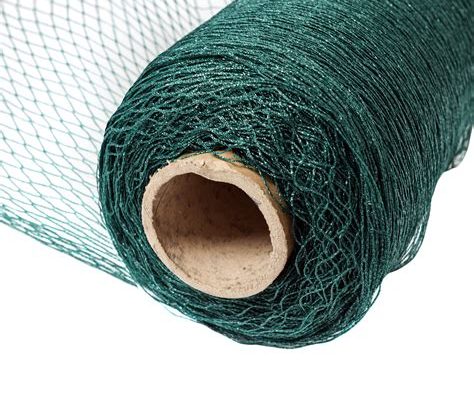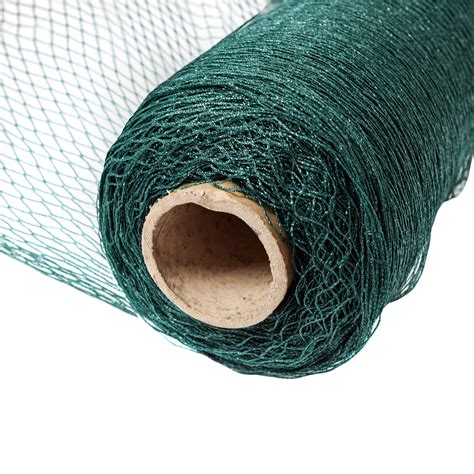

Netting is a versatile material used for various purposes such as fishing, sports, and safety applications. Learn more about its uses and benefits.
Netting has been around for centuries, but its uses have evolved over time. From catching fish in the sea to protecting crops from birds and pests, netting has become an essential tool for many industries. However, its benefits go beyond its functional purposes. Netting has also become a symbol of creativity and innovation, with artists and designers incorporating it into their works. Whether you’re a farmer, a fisherman, or an artist, netting offers a versatile solution to a wide range of challenges.
Daftar Isi
Netting: A Controversial Method of Fishing
Netting is a fishing method that has been used for centuries. It involves the use of nets to catch fish in rivers, lakes, and oceans. However, this method of fishing has become controversial over the years due to its negative impact on the environment and the fish population.
Types of Nets Used in Fishing
There are different types of nets used in fishing. The most common ones include gill nets, seine nets, trawl nets, and cast nets. Gill nets are used to catch fish by entangling them in the net, while seine nets are used to surround a school of fish and then draw the net closed. Trawl nets are used to drag the bottom of the sea to catch fish, while cast nets are thrown by hand to catch fish near the surface of the water.
The Negative Impact of Netting on the Environment
Netting has a negative impact on the environment. It can damage coral reefs, destroy seagrass beds, and harm other marine life such as sea turtles, dolphins, and sharks. When nets are left in the water, they continue to trap and kill fish, which leads to overfishing and depletion of fish populations.
Regulations on Netting
In order to protect the environment and the fish population, many countries have implemented regulations on netting. These regulations limit the size and type of nets that can be used, as well as the areas where netting is allowed. Some countries also require fishermen to obtain a license before they can use nets to fish.
The Effectiveness of Netting
While netting can be an effective method of fishing, it is not always the most efficient. Fishermen often catch more fish than they need, which leads to waste and overfishing. Additionally, netting can be harmful to the fish that are caught, as they can become entangled in the net and die before they are released.
Alternatives to Netting
There are many alternative methods of fishing that are more sustainable and environmentally friendly than netting. These methods include hook and line fishing, spearfishing, and trap fishing. These methods are more selective, which means that fishermen can choose which fish they catch, rather than catching everything that gets caught in the net.
The Future of Netting
The future of netting is uncertain. While some fishermen continue to use this method of fishing, others are turning to more sustainable and environmentally friendly methods. As awareness of the negative impact of netting grows, it is likely that more and more countries will implement regulations on this fishing method in order to protect the environment and the fish population.
The Importance of Sustainable Fishing Practices
Sustainable fishing practices are essential to the health of our oceans and the survival of fish populations. By using methods that are more selective and less harmful to the environment, we can ensure that future generations can continue to enjoy the benefits of a healthy and vibrant ocean ecosystem.
The Role of Consumers
Consumers also have a role to play in promoting sustainable fishing practices. By choosing to buy seafood that has been sustainably caught, consumers can help to create demand for more sustainable fishing methods. This can encourage fishermen to adopt more sustainable practices in order to meet the needs of the market.
Conclusion
Netting is a controversial method of fishing that has both positive and negative effects on the environment and the fish population. While this method of fishing has been used for centuries, it is important to consider the impact it has on our oceans and to adopt more sustainable fishing practices in order to protect our marine ecosystems for future generations.
Netting for Crop and Garden Protection
Netting has become a popular method for protecting crops and gardens from pests. This physical barrier is effective in keeping insects and animals away from plants, while still allowing sunlight and water to filter through. The benefits of using netting are numerous, including reduced need for chemical pesticides, lowering costs by preventing damage to crops, and promoting healthy growth by shielding plants from harsh weather conditions.
Types of Netting
Various types of netting are available on the market, each designed for specific applications. Insect netting is used to prevent insects from damaging crops, while bird netting keeps birds away from fruit trees and vegetable gardens. Shade netting is used to provide shade and protect plants from excessive heat, windbreak netting helps protect crops from strong winds, and hail netting provides protection from hail damage.
Installation and Maintenance
Proper installation of netting is critical to ensure its effectiveness. It is essential to measure the area accurately, select the correct size and type of netting, and secure it correctly to prevent gaps and tears. Regular maintenance of netting is necessary to prolong its lifespan and optimize its effectiveness. This includes repairing tears, cleaning it regularly, and storing it properly when not in use.
Cost and Environmental Impact
The cost of netting varies depending on the type and size needed, but it is generally affordable and can save money in the long run by protecting crops and reducing damage. Using netting can have a positive environmental impact by reducing the need for chemical pesticides and promoting sustainable farming practices.
Challenges and Alternatives
While netting is an effective method of crop protection, there are some challenges associated with its use. Wildlife can become entangled in netting, and installation and maintenance can be inconvenient. For farmers and gardeners who do not wish to use netting, there are alternative methods of pest control, including companion planting, crop rotation, and biological control.
Conclusion
Netting is a practical and useful method for protecting crops and promoting healthy growth. By choosing the right type of netting and installing and maintaining it correctly, it can provide effective crop protection and reduce the need for harmful chemical pesticides. Farmers and gardeners can weigh the benefits and challenges of using netting and select the best option for their needs and preferences.
Netting is a commonly used method in various industries, including fishing, sports, and agriculture. Although it has its advantages, there are also some drawbacks that need to be considered.
Pros of Netting:
- Efficiency: Netting is an efficient way to catch fish or other animals in large quantities. It saves time and labor compared to other methods such as angling or trapping.
- Safety: In sports, netting provides a safety barrier for spectators and players by preventing balls or equipment from flying into the crowd or out of the field.
- Crop protection: In agriculture, netting can protect crops from pests, birds, and other animals while allowing sunlight and rain to reach the plants.
- Environmental benefits: Some types of netting, such as those used in fishing, can be more environmentally friendly than other methods that may harm non-target species or damage the ecosystem.
Cons of Netting:
- Bycatch: In fishing, netting can result in bycatch, which is the unintended capture of non-target species. This can have negative impacts on the ecosystem and lead to overfishing.
- Cost: Netting can be expensive to purchase and maintain, especially for large-scale operations.
- Cultural issues: In some cultures, the use of netting may be seen as unethical or disrespectful to the environment or animals being caught.
- Safety concerns: Improperly installed or maintained netting can pose safety risks, especially in sports or construction settings where people may come into contact with the netting.
Overall, netting can be an effective and useful tool in various industries, but it is important to consider the potential drawbacks and weigh them against the benefits before deciding to use it.
Netting without title is a growing concern among journalists and content creators worldwide. It refers to the practice of using someone else’s content without proper attribution or permission, often leading to copyright infringement. In today’s digital age, it has become easier than ever to access and share content online, but it’s important to remember that every piece of content has an owner who deserves credit for their hard work and creativity.
Netting without title can have serious consequences for both the content creator and the person who uses their work without permission. For the creator, it can mean lost revenue, damage to their reputation, and a sense of violation. For the user, it can result in legal action, fines, and damage to their own reputation as a trustworthy source of information. Therefore, it’s essential to always give credit where credit is due and respect the intellectual property rights of others.
If you’re a content creator, it’s important to protect your work by watermarking your images, registering your copyrights, and monitoring the internet for unauthorized use of your content. If you’re a user, make sure to always ask for permission before using someone else’s work and give proper attribution when you do. By working together to respect each other’s creative rights, we can foster a culture of collaboration and innovation that benefits everyone.
In conclusion, netting without title is a serious issue that affects the entire online community. As journalists and content creators, it’s our responsibility to uphold the highest standards of ethics and professionalism by respecting the intellectual property rights of others. By doing so, we can create a more vibrant, diverse, and inclusive digital landscape that celebrates creativity and fosters innovation. Let’s work together to make the internet a better place for everyone!
Video netting
Many people have questions about netting and its various uses. Here are some commonly asked questions and their respective answers:
1. What is netting?
Netting is a material made of threads or cords woven or knotted together in a grid-like pattern. It can be made from various materials like nylon, polyester, cotton, or even metal wire.
2. What are the uses of netting?
- Protecting crops from birds and insects
- Preventing debris or animals from falling off of construction sites
- Providing safety barriers around sports fields or other recreational areas
- Partitioning off areas in warehouses or factories
- Making fishing nets to catch fish or other aquatic creatures
3. Is netting environmentally friendly?
It depends on the type of netting and how it is used. Some types of netting, like those made from natural fibers, can be biodegradable and eco-friendly. However, plastic and synthetic netting can harm wildlife if not disposed of properly.
4. Is netting safe for children and pets?
Again, it depends on the type of netting and its intended use. Netting used for sports fields and playgrounds should meet safety standards and be installed properly to prevent accidents. Similarly, bird netting used for gardens should be installed at a safe height to prevent entanglement. Pet owners should also choose netting carefully to ensure that it is strong enough to hold their pets without causing harm.
5. How do I choose the right netting for my needs?
Consider the purpose of the netting, the environment it will be used in, and the materials it is made from. Look for netting that is strong enough to withstand the intended use and weather conditions. It may also be helpful to consult with a professional or do research online to find the best netting for your specific needs.






